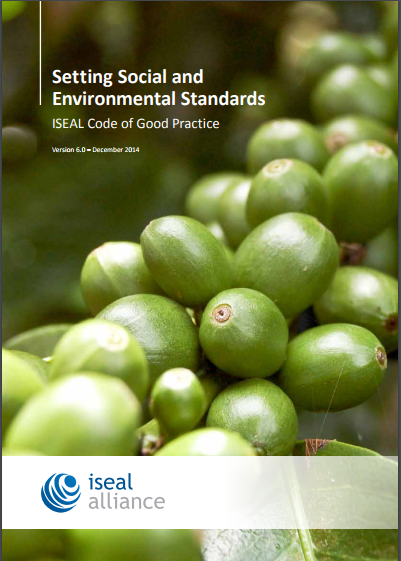About the code
The Code of Good Practice for Setting Social and Environmental Standards (Standard-Setting Code) is ISEAL’s first Code and is widely recognised by international organisations, governments, businesses, and NGOs. It defines effective standard-setting processes, including how a standard is developed, structured and governed. The criteria of the Code and the practices it promotes are underpinned by the ISEAL Credibility Principles, and we believe that by implementing the Standard-Setting Code and embracing the Credibility Principles, organisations are more likely to deliver positive social and environmental impacts.
All standard-setting organisations that are members of the ISEAL Alliance are committed to implementing with the Standard-Setting Code. Associate members must comply with the baseline criteria, while full members must pass through an independent evaluation to show compliance with the improvement criteria in the Standard-Setting Code. A list of the Code criteria (baseline and improvement) can be found here.
ISEAL Codes of Good Practice build credibility
The goal of all ISEAL Codes of Good Practice is to support standards systems to deliver positive social and environmental impact. ISEAL Codes of Good Practice complement each other to achieve this:
- The ISEAL Code of Good Practice for Setting Social and Environmental Standards (Standard-Setting Code) supports the development of standards that are relevant and transparent and that reflect a balance of stakeholder interests;
- The ISEAL Code of Good Practice for Assuring Compliance with Social and Environmental Standards (Assurance Code) helps to ensure accurate results from assessments of compliance and to encourage the use of assurance to support learning; and
- The ISEAL Code of Good Practice for Assessing the Impacts of Social and Environmental Standards Systems (Impacts Code) supports standards systems to measure and improve the results of their work and to ensure that standards are delivering their desired impact.
Individually, each Code is useful in strengthening a component of a standards system. However, users of standards and other stakeholders will have a higher level of confidence in the effectiveness of a standards system when the Codes are implemented together.

